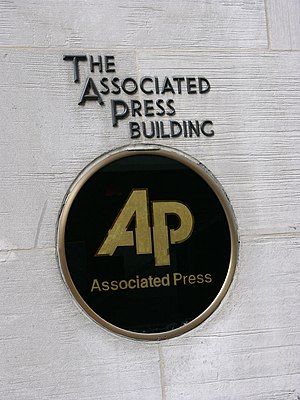Zachary M. Seward notes: "Tom Curley, president and chief executive of the AP, raised a ruckus last month when he seemed to tell The New York Times that using an AP headline that linked to the original article would require a copyright license. Among the more entertaining responses to that position was a blog whipped up by developer Andy Baio, who used the AP’s own RSS feeds to republish headlines, ledes, and URLs in the style to which Curley appeared to object. Baio called the simple act of protest Associated Repress.
I described the site to Kasi, who told me: 'I think that the person doing that: wonderful. We celebrate free speech.' But what if that site carried ads? Could the use of AP headlines and ledes ever amount to copyright infringement? 'At some point,' Kasi said, 'the variables start to come together that, absolutely, it would be actionable.' We were getting somewhere: Although Kasi didn’t want to lay out a rubric for the AP’s legal strategy, the most important variables appear to be frequency of use and whether that use constitutes a significant, competing, commercial business. So, no, Baio probably wouldn’t get a cease-and-desist letter for his barely read site, even if it were littered with ads, but a more prominent aggregator could."
Seward adds: "The AP would like to encourage use of its content — even full content — under terms that might not be so different from the APIs released by The New York Times and NPR. (Then again, it might be very different. The AP thus far hasn’t said what restrictions it will attach to its APIs.) I asked Kasi for an example, and he said that a mobile developer who wanted to include the AP’s articles or videos in an iPhone application could do so, probably without paying for access. Addressing the hypothetical developer, he said, 'If this becomes a runaway success, I want to be part of this kind of business arrangement with you. In the meantime, if you want to experiment, go at it.'”
Felix Salmon with Reuters chimed in with this:
The impression that Kasi gives, via Seward, is that the AP is benign at heart:
When you look at the things that we’ve actually enforced or pursued, it’s a small handful of situations. Even the ones where there’s a lot of noise being made, it is to point out the kind of conduct, of systematic conduct that we want to have addressed. But if you really push it to the extreme of, ‘OK, how many do we legally enforce in a court of law?’ It’ll be less than the number of fingers on a single hand.
This is really hard to square with the black letter of the memo, with its talk of the “legal imperatives” facing the AP. And in fact, if you examine it closely, it’s much more invidious than it sounds.
Essentially, the AP is encouraging the rest of us to remix its work — on the understanding that, statistically speaking, most of us will fail. On the other hand, if we succeed — if we go viral, like Shepard Fairey, or start making non-trivial ad revenue, like Newser, then they’ll come at us with expensive lawyers, and they won’t be friendly. What’s more, they feel that it’s strategically necessary to be very aggressive in protecting their intellectual property in such situations.
This isn’t a FUD campaign designed to make people wary of using AP content. It’s worse than that: it’s an attempt by the AP to outsource innovation to others, and then, in the handful of cases where the innovative gamble pays off, grasp substantially all the benefits of that innovation for themselves. Call it a “be evil” strategy. How else can you explain the Fairey lawsuit?

No comments:
Post a Comment